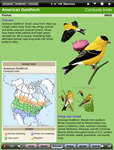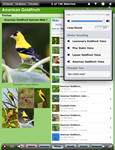 Transmedia storytelling involves a multimodal, multmedia story with nonlinear, participatory elements. Resources connected to the story might including print materials, documents, maps, web-based clues, mobile Apps, cell phone calls, social media connections, activities and games, and media (audio, video, animation). The main line of the story may or may not be in one location such as a traditional book or website. The narrative may be told through a series of media. 39 Clues, Skeleton Creek, Cathy's Book are all examples.
Transmedia storytelling involves a multimodal, multmedia story with nonlinear, participatory elements. Resources connected to the story might including print materials, documents, maps, web-based clues, mobile Apps, cell phone calls, social media connections, activities and games, and media (audio, video, animation). The main line of the story may or may not be in one location such as a traditional book or website. The narrative may be told through a series of media. 39 Clues, Skeleton Creek, Cathy's Book are all examples.
Example: The Amanda Project: experience website, fictional school website
Schneider (2005, 198) states that "the readers of hypertexts thus appear as empowered readers, liberated from the constraints imposed by 'traditional' literature – some commentators even raise the question whether the very terms 'reader' and 'reading' might not have become inadequate for hypertext reception". This type of reading requires skills not required in traditional reading.
Do the examples above fit your definition of "reading a book"?
 E-books feature linear content equivalent to a print book. However many of the e-book devices contain tools such as highlighter, dictionaries, and notetaking options. Many popular authors are producing electronic book versions of their books. Enhanced e-books contain multimodal features within the linear text such as images, web links, and embedded media. Many nonfiction books are incorporating media elements.
E-books feature linear content equivalent to a print book. However many of the e-book devices contain tools such as highlighter, dictionaries, and notetaking options. Many popular authors are producing electronic book versions of their books. Enhanced e-books contain multimodal features within the linear text such as images, web links, and embedded media. Many nonfiction books are incorporating media elements.

 Transmedia storytelling involves a multimodal, multmedia story with nonlinear, participatory elements. Resources connected to the story might including print materials, documents, maps, web-based clues, mobile Apps, cell phone calls, social media connections, activities and games, and media (audio, video, animation). The main line of the story may or may not be in one location such as a traditional book or website. The narrative may be told through a series of media. 39 Clues, Skeleton Creek, Cathy's Book are all examples.
Transmedia storytelling involves a multimodal, multmedia story with nonlinear, participatory elements. Resources connected to the story might including print materials, documents, maps, web-based clues, mobile Apps, cell phone calls, social media connections, activities and games, and media (audio, video, animation). The main line of the story may or may not be in one location such as a traditional book or website. The narrative may be told through a series of media. 39 Clues, Skeleton Creek, Cathy's Book are all examples.